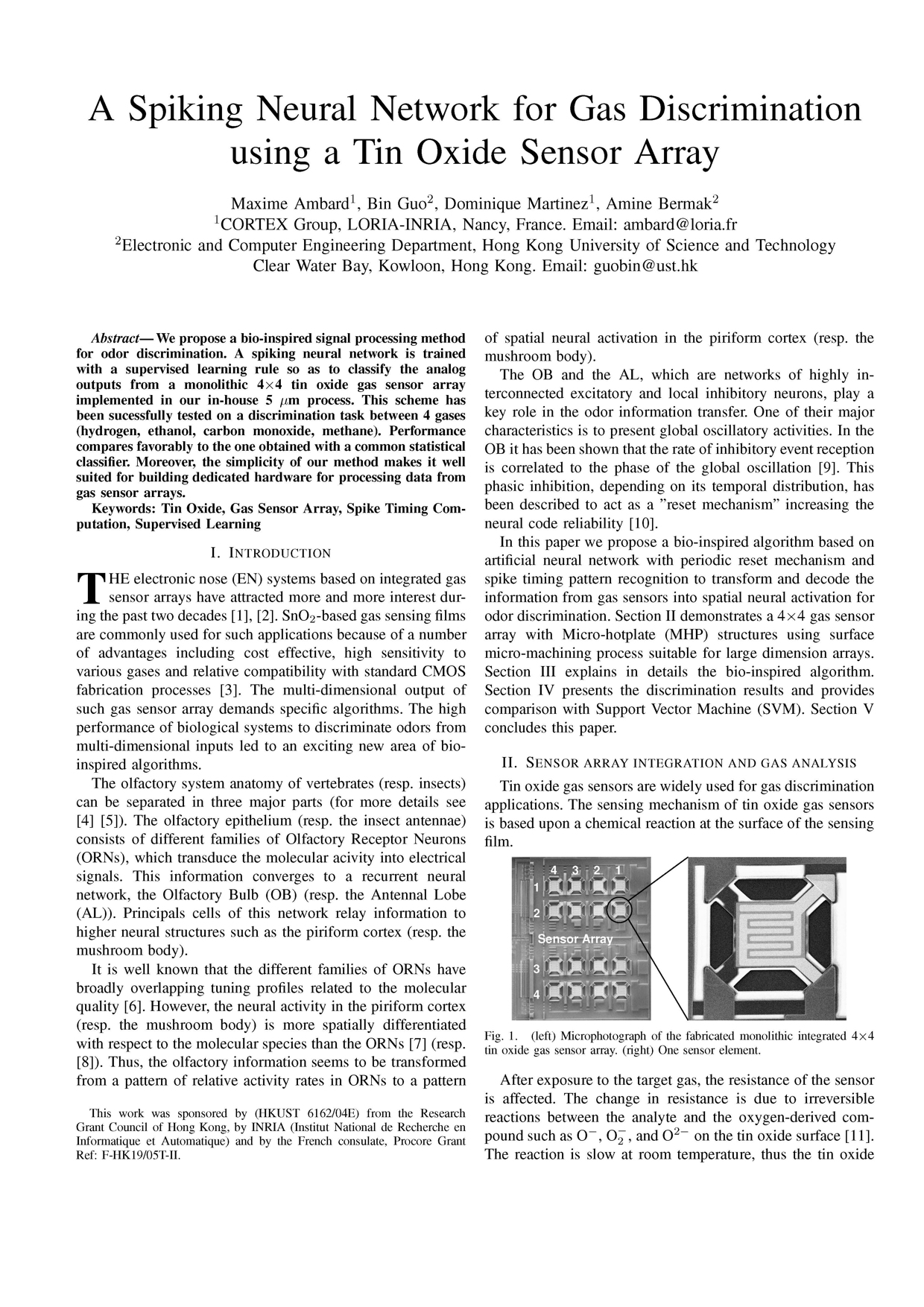We propose a bio-inspired signal processing method for odor discrimination. A spiking neural network is trained with a supervised learning rule so as to classify the analog outputs from a monolithic 4×4 tin oxide gas sensor array implemented in our in-house 5 µm process. This scheme has been sucessfully tested on a discrimination task between 4 gases (hydrogen, ethanol, carbon monoxide, methane). Performance compares favorably to the one obtained with a common statistical classifier. Moreover, the simplicity of our method makes it well suited for building dedicated hardware for processing data from gas sensor arrays.
A spiking neural network for gas discrimination using a tin oxide sensor array
